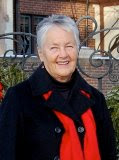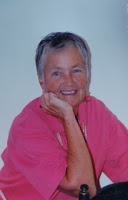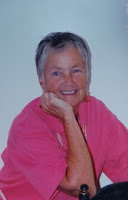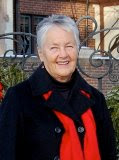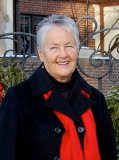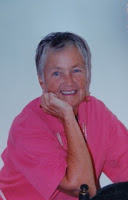1982 was an eventful year: the closet door opened for me completely that year. And I stepped out with my head held high. At the same time the world of athletic opportunity opened for members of the LGBT community world wide. 1982 was the year of the first and inaugural Gay Olympics. This event started out as and has continued to be the largest sporting and cultural event specifically for gay, lesbian, bisexual, and transgender people. The event is modeled after the Olympic Games. It was early on that the Olympic Games authorities pressured the Gay Olympics authorities to drop the name “Olympics” lest there be some perceived connection between the two events. Thus the title “Gay Games” came to be.
The following is the statement of concept and purpose of the Federation of Gay Games:
“The purpose of The Federation of Gay Games, Inc. (the “Federation”) shall be to foster and augment the self-respect of lesbian, gay, bisexual, transgender, and all sexually-fluid or gender-variant individuals (LGBT+) throughout the world and to promote respect and understanding from others, primarily by organising and administering the international quadrennial sport and cultural event known as the “Gay Games.”[4]
The games held every four years are open to individuals and teams from all over the world. Entry into the games is not restricted to GLBT individuals. All people are welcomed into the competition which has become the largest sporting and cultural event in the world exceeding the number of athletes participating in the Olympics.
The 1982 and 1986 events were held in San Francisco. Since then athletes have gone all over the world to compete in such countries as Canada, the Netherlands, Australia, Germany. Paris is slated to host the 2018 games.
In the late 1980’s I was making friends and acquaintances in the LGBT community. Though I had never heard of the Gay Games, I knew a woman active in the lesbian community who played tennis and had been a high school tennis coach. I had actually been on the court with her a few times. She asked me if I would like to enter the women’s tennis competition as her doubles partner in the upcoming Gay Games. “What’s that?” I answered. All I needed was the smallest explanation and I was ready to pack my bags for Vancouver, the site of the 1990 Gay Games.
The competition was quite wonderful I did come away with a silver medal in tennis. Preparing for the event was equally satisfying. We actually had a Colorado tennis team made up of probably a dozen men and women—mostly men. I soon discovered that there existed a A Gay Games Team Colorado made up of maybe 200 athletes including swimmers (mostly), runners, cyclists, and many others. We had uniforms—really nice—black with pink trim warm up suits. We were given a send-off at none other than Boetcher concert hall. I remember standing on the stage with my 200 or so team mates with balloons dropping from above when the cheers went up from the full hall of supporters. I stepped on one of those balloons, fell down, and came very close to being trampled by my teammates.
Or was that the send off for the New York games of 1994? I’m really not sure I remember correctly. But I know I did have the privilege of attending two Gay Games events—1990 in Vancouver, and 1994 in New York City. Two of the proudest moments of my life were marching with my team into the stadiums in those two cities in their opening and closing ceremonies.
The New York event drew 12,500 participants from 40 countries.
That games experience was very special in that my lesbian daughter was participating as well— as a member of the Connecticut women’s soccer team. It was definitely a proud and memorable moment for me when I found myself marching with my daughter in a parade of 12,000 LGBT athletes through Yankee stadium to the cheers of tens of thousands of supporters and spectators. (aside:) the reason Lynne and I were able to march together was only because Colorado and Connecticut both start with C. Team Connecticut directly followed Team Colorado in the alphabet and in the parade of athletes. What luck!!
I say we were marching with 12,000 LGBT “athletes.” It is important to note that the event was never intended to be focused on athletic ability alone, however. In the words of Olympic track star Tom Waddell whose inspiration gave birth to the games in the 1980s, “The Gay Games are not separatist, they are not exclusive, they are not oriented to victory, and they are not for commercial gain. They are, however, intended to bring a global community together in friendship, to experience participation, to elevate consciousness and self-esteem and to achieve a form of cultural and intellectual synergy…..We are involved in the process of altering opinions whose foundations lie in ignorance. “
Some of this I wrote about a few years ago in a piece called “Game, Set, Match:” I love this one particular anecdote and want to take the opportunity to repeat it here:
“Four years {after the Vancouver Games} I would participate in Gay Games IV in New York. I was able to share this experience with my daughter Lynne who lived not far from NY City in New Haven, Connecticut. This is when my lesbian daughter came out to me. When I told her I was coming to New York to play tennis in the Gay Games she replied ‘Oh good!! We’ll go together. I’m going to participate in the games too, Mom. I’m playing on the Connecticut women’s soccer team.’ Yes, that was her coming out statement to me! We did enjoy that time together and watched each other in our respective competitions and cheered each other on.”
The events of that day did much indeed to define our very strong and positive future mother-daughter relationship.
These amazing games have continued every four years since their inception in 1982 and I have described my participation experience in just one of the competitions, tennis. There have been and continue to be literally hundreds of such competitive exhibitions from croquet to weight lifting to volleyball and basketball to diving and water polo—all events similar to those of the Olympic Games.
There is another aspect of the extravaganza which is worthy of mention ‘though I am not as personally familiar with its activities. The Gay Games includes cultural activities as well. Many, many LGBT choruses, musicians, and performers of all kinds gather to perform for all audiences, and to share their talent and craft.
I truly believe the Gay Games has more than fulfilled the dreams of Tom Wadell and those others who were its founders. There is no doubt the games continue to bring the LGBT community together in friendship and sharing, to “elevate consciousness and self-esteem,” and “to alter outside opinions whose foundations lie in ignorance.”
Those who work to ensure the event’s future are all heroes and heroines.
Neither my daughter nor I have been to any of the games since New York, but we will both remember our experiences for the rest of our days. I was indeed privileged and I am very proud to have been a part of both the Vancouver and the New York Gay Games.
© 10 January 2017
About the Author
Betsy has been active in the GLBT community including PFLAG, the Denver Women’s Chorus, OLOC (Old Lesbians Organizing for Change), and the GLBT Community Center. She has been retired from the human services field for 20 years. Since her retirement, her major activities have included tennis, camping, traveling, teaching skiing as a volunteer instructor with the National Sports Center for the Disabled, reading, writing, and learning. Betsy came out as a lesbian after 25 years of marriage. She has a close relationship with her three children and four grandchildren. Betsy says her greatest and most meaningful enjoyment comes from sharing her life with her partner of 30 years, Gillian Edwards.
